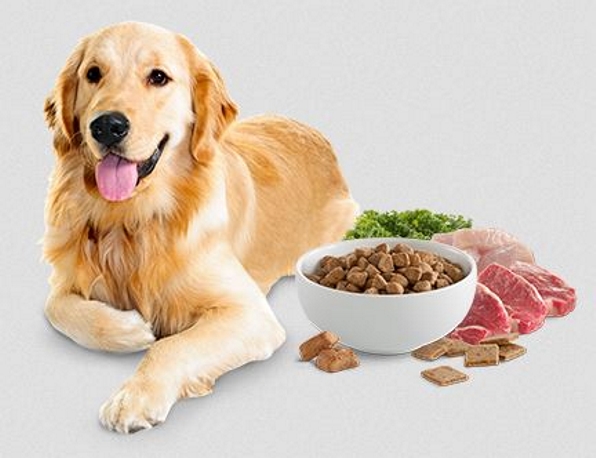There’s an interesting shift taking place in the commercial Pet Food sector. And it has as much to do with who’s making it as it does with what’s being made. What pet lovers are seeing is a move toward fresher food options offered by smaller ‘start-ups’…

Mintel, a global market intelligence agency, is predicting groundswell changes in the pet food sector. And it’s due to hit the market big-time this year.
‘Innovation’ is the by-word
“About a third of pet food product introductions in the last five years were from new companies or brands, which is much higher than what we see in human food,” notes Lynn Dornblaser, Director of Innovation and Insight at Mintel. “And the greatest percentage of pet food launches appeared in Europe.”
According to petfoodindustry.com, Dornblaser told the crowd at the American Feed Industry Association Pet Food Conference held in Atlanta on January 30 during IPPE 2024, there are three key global trends coming for pet food:
- Product and formula personalization
- Natural and easy-to-understand ingredients
- Sustainability
Personalization
We’ve already seen this one advertised heavily on TV, most prominently by new brands that provide ‘fresh’ and minimally-processed per foods.
A deeper understanding
“The industry is shifting to a new approach, with a deeper understanding of how cats and dogs eat, sleep, play and behave throughout their lives to customize products towards the different needs of individual pets,” Archer Daniels Midland (ADM) researchers analysts wrote In their 2023 Insights Report.
ADM report also invoked the notion of ‘humanization’ – more a move to make the humans involved feel they’re giving their pets ‘something better’. Better than kibble, that is.
Addressing obesity
“A key concern among pet owners – and one that could benefit from a personalized approach is obesity,” Dornblaser observed. “In France, for example, 33 percent of pet food buyers think their pet would benefit from losing some weight. In the UK, 62 percent of pet food buyers agree their pet would benefit from losing some weight and would be interested in personalized meal plans.”
Most major pet food makers have long offered special formuli designed to address specific issue. Science Diet has separate foods for various pet age groups. For cats, it offers Hairball Control and Weight Control options. But customization of food formuli from region to region is something new for manufacturers to think about.
Natural and easy-to-understand ingredients
Dornblaser reported that 23 percent of US pet owners already look for foods with limited ingredient lists. They’re generally concerned about additives and ingredients they aren’t familiar with and don’t trust. “No ‘bad stuff’ tends to focus on additives,” she explained. “Globally, no additives and no artificial colors, flavors or preservatives lead when it comes to claims around overall ‘naturalness.’”
Chilled and frozen foods
More than one major start-up that’s surfaced over the past couple of years focuses on chilled or frozen ‘fresh’ pet foods. This trend is marketed overtly as a way to cater more naturally – and appealingly – to pets innate natures and preferences. But it’s also covertly a big play to appeal to ‘humanization’ – the desire in pet lovers to feed their darlin’s something more identifiable as ‘real food’.
While only about 1 percent of new pet food launches each year currently falls into this category, it’s expected to be a big deal in the future.
Reflected in human foods
This particular pet food trend is reflected in a parallel trend in human food. The well-publicised dangers of processed foods has sunk in with consumers, and they’re starting to rebel against products with a lot of ingredients and ingredients they don’t understand.
Sustainability
It’s hard to find a food-related topic these days that doesn’t attract comments about environmental sustainability. And rightfully so. We’re headed for a huge shift in the way we eat over the next few decades, culminating in a new western diet heavier in veggies and plant-based proteins. Not unlike the diet of choice in the East which has served those cultures well for thousands of year.
But until then, climate and food experts alike plead daily with us to consider the sustainability of our food choices. Fir instance, if you must eat meat, dump beef in favour of chicken, which has a smaller carbon footprint.
A multi-dimensional thrust
Sustainability is manifesting itself in multiple dimensions in the pet food industry. Dornblaser lists four fronts on which the issue is being addressed:
- Continued focus on sustainable packaging
- Sustainability of ingredients, including regenerative agriculture
- Upcycled ingredients
- Water use
Sound familiar? They’re the same fundamental concerns being enunciated in virtually all corners of the food production, processing and retailing spheres these days.
Consumers are definitely hip to it
“In the U.S., 61 percent of pet food buyers want brands to limit their environmental impact,” Dornblaser reported. “In Colombia and Mexico, 62 percent of consumers say environmentally friendly packaging is important to them when choosing any food, human or pet. In Italy, 79 percent of pet owners would like to know more about the eco-footprint of the pet foods they buy. And in Germany, 54 percent of pet owners say ethical alternatives to regular pet products are always preferable.”
My take
It’s good to see the pet food makers and their customers are tuned-in to the sustainability issue. And I’m extra glad to see them thinking about upcycled ingredients. That’s going to result in better products and reduced overall food waste.
I have to take a sly side-eye and allow myself a grin over the humanization trend. It preys on pet lovers’ innate desire to ‘do better’ for their furry friends. And they receive ample gratification when their dog or cat digs eagerly into a bowl of moist, meaty-looking, ‘real’ food. And the pets, themselves, think they’re getting something special – some ‘human’ food. Both particpants in the feedin g dance are being hoodwinked, nut it;s harmless. And neither cares.
What I do balk at is the price of the new chilled and frozen pet foods. For example, a 2 lb. / 900 g chub of one popular fresh food brand costs $18.49 at PetSmart, Canada’s largest pet needs retailer. That would be barely two meals for our Labro-wyler, Riley. At near $10 a meal, that’s twice the max we try to keep to for out own meals! Perhaps the price of these nouveau-luxe foods will come down as the makers get more into upcycled ingredients. But with food prices overall being punishingly high everywhere these days, I fear the boutique fresh food brands will ultimately suffer under a low sales ceiling…
~ Maggie J.

